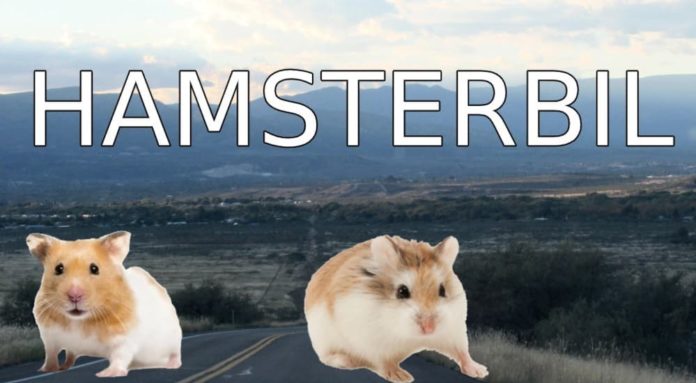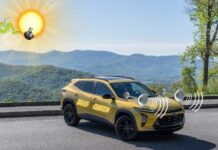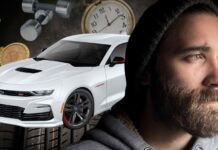Electric vehicles are yesterday’s news. The Tesla Cybertruck, the Ford Mustang Mach-E: these are so last year that they might as well be Epstein memes. At a secret meeting, attended only by top men at Chevy (Top… Men) and a few key industry insiders (yours damn truly!), the engineers at GM revealed a specially-designed hamster-powered vehicle that you’ll find at your Chevy dealership sooner than you’d expect. The future belongs to Chevrolet––the future belongs to the hamster!
Now I know what you’re going to say: “That’s dumb. You’re dumb, shut up Rutherfjord!” To which I reply, “Yes, it is.” And “No, you!” But stupidity has never been the enemy of the auto industry, and innovation is often indistinguishable from madness. When you’re ready to stop suckling at the electric teat of lesser developers and embrace the future shown to us by the visionaries at Chevy, then we can talk.
If you’re ready for the hamster-rich future that each and every one of us, as Americans, deserve, then come with me. Together, we will catch a glimpse of our glorious, furry destiny made manifest.
What Chevy Revealed
This event held on February 7th at [Redacted] was the unveiling of the bold new look of Chevrolet. What those of us in attendance witnessed was nothing short of the very face of God, looking back at us and marveling at our ingenuity and dominion over the natural world. It was the 20XX Chevy Hamsterbil: a miracle on four wheels, a car solely powered by hamsters.
That may seem like the absurdist dream of a syphilitic madman growing old in the shadows of a forgotten New England insane asylum, but it is reality. Consider this: a single hamster, in its wheel, is capable of generating about 0.5 joules per second of energy. Spectacular!
Now let’s look at your typical Chevy car, for example, the 2020 Chevy Cruze Hatchback. The Cruze comes with a 1.4L Turbo 4-cylinder engine that can generate up to 153 hp. Still with me? Good, because here’s where the genius of Chevy shines through. One horsepower is equivalent to about 745 joules per second, which is to say the Cruze Hatchback’s engine generates up to about 114,000 joules per second of energy. Oh look, that’s the amount of energy produced by 228,000 hamsters.
The 20XX Chevy Hamsterbil we saw was equipped with more than 300,000 hamsters for the equivalent of a 200 hp engine (soon “hp” will stand for “hamster power,” and we won’t have to make these archaic and ridiculous conversions anymore). Now, they were quick to say that this was probably not going to be the standard engine––that’s expected to have closer to 250,000 hamsters––pretty much a 168 hp engine by current standards.
But, how can so many hamsters fit into a car? Surely they’re not all in the engine block? Of course not. The hamsters are loaded into every square inch of the vehicle’s frame––everything that is not the drivetrain, and the passenger space is hamster. Hamsters in balls fill the front trunk, they are loaded into compartments under the rear trunk, and packed into the doors and undercarriage. Hamsters run throughout the very seats, providing you with a sensual and luxurious massage as they power your futuristic Hamsterbil through rain-soaked streets, gleaming in the blazing neon lights of the new American metropolis.
Official Announcements
At the event, designers at GM said, “The hamster is the energy source of the future, and all of us at Chevrolet are committed to seeing our vision through.” At least one person in attendance was so overcome by the beauty of what he saw that he collapsed in a fit akin to what one might see at a Baptist revival. Men began speaking in tongues. One woman sprouted eagle’s wings of alabaster and golden light, dripping with honey; she ascended skyward in a beam of celestial radiance, a fiery sword clutched in her hand.
When pushed for a possible release date, we were told that the developers still had to “figure out a few things related to asset recycling and generational development.” We were told by one corporate officer that wore a rabbit mask over his face that this was code for the fact that they haven’t figured out how to deal with thousands of dead hamsters every year. Based on what we’ve seen so far, however, I have every confidence that they’ll work it out.
After the event, I realized I had forgotten to ask about whether the Hamsterbil would be RWD or AWD. When I called Chevrolet to inquire about this important information, the first person I spoke to hung up on me when I asked about their beautiful “hamster wagon.” I’m used to this kind of reaction, however, so I called again––this time, I was redirected to the US Centers for Disease Control and Prevention. Sadly, at that point, it was my nap time, so this is a question that will have to wait for another day.
Failed Developments
The Chevy designers and engineers were quick to point out, however, that this incredible hamster-based innovation was not without its hiccups in development. For nearly 20 years, GM has been committed to seeing hamster-power come into its own, but tapping into this incredibly rich potential has been difficult. One developer related the following story, met, of course, with wild applause:
“We started this back in 2002––we knew the world was ready for something different and that we needed a real, practical alternative to fossil fuels. Everything went back to the drawing board, we brought in Dr. Horsepatrick, and he really changed everything [Note: this person seems to have been the lead engineer on the project; he was not present and when we asked about him, the only response we were given was a single tear running down the cheek of one designer]. This is all the result of his vision.
“It kicked off with sled dogs, of course, but that proved impractical. They were too rambunctious, and traffic issues that would arise from so many people stopping to pet so many good boys and girls would be a nightmare. Dr. Horsepatrick realized we needed to streamline things, and he was inspired by the miniaturization of circuitry and computer technology. That led us to the hamster.
“Our first efforts were with external power supplies. Under fairly ideal conditions, a hamster can easily pull its own weight behind it. With something like the Chevy Spark, you only need about 34 lbs of force to move it––that means just 680 hamsters were needed to pull the Spark, more than that once you factor in passengers. Things got a lot more complicated with the Chevy Suburban, however, where we needed about 1,600 hamsters to get it moving––and with seven or eight people inside, things got pretty hairy.
“Plus, braking was a real issue. We didn’t have automatic braking then like we do now. The first tests were… they were massacres.” At this point, the developer’s eyes grew watery, and he stared off into the distance for a moment, before clearing his throat and continuing. “It was Dr. Horsepatrick, of course, who figured it out. I remember he called me in the middle of the night one evening, his voice trembled with excitement and he said to me, ‘Inside. We put the hamsters INSIDE!’ I knew exactly what he meant.
“Turns out he meant we should put the hamsters inside the car. That worked well too. So here we are today with the Hamsterbil and the future of Chevrolet.”
The future indeed, I couldn’t say it any better myself.
Editor’s Note: We don’t get paid enough to figure this out. The last time we tried to lock Mr. Von Gourdboddum out of our offices, we arrived the next day to find the doors had been removed and turned into a lovely sculpture in the middle of our parking lot. So you’re on your own here; may God have mercy on us all. Thank you.












